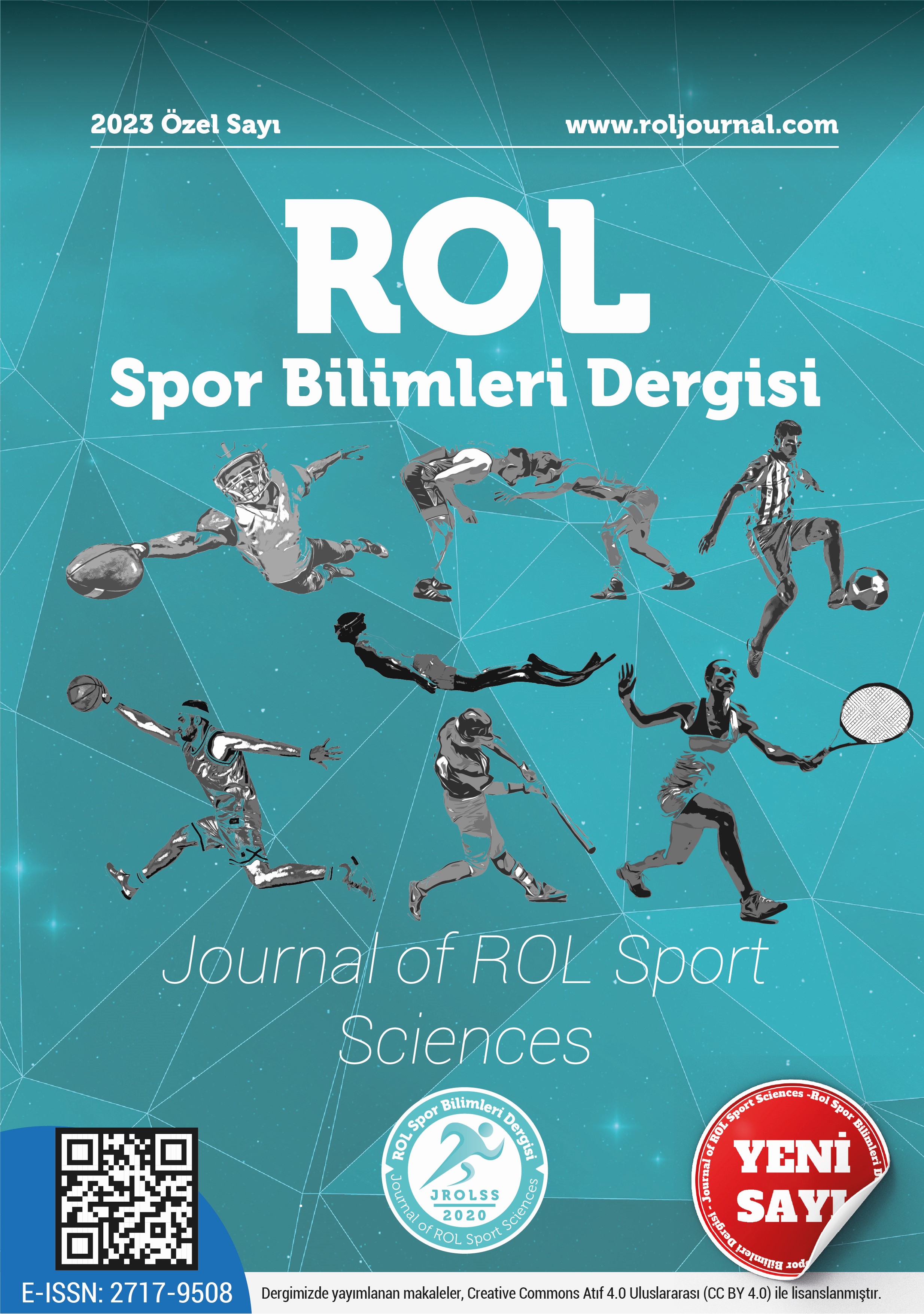The reality of physical activity in aging
DOI:
https://doi.org/10.5281/zenodo.8405808Keywords:
Ageing, exercise, physical activity, successful ageingAbstract
While no amount of physical activity can stop the aging process, a moderate amount of regular exercise can minimize the physiological effects of a normally sedentary individual's lifestyle, limit the development and progression of chronic diseases and disability, and increase active life expectancy. Muscle strengthening, flexibility and aerobic exercises should be suitable for older individuals. In addition, individuals at risk for falls or movement disorders should also do special exercises to improve balance. The intensity and duration of physical activity should initially be low for people who are severely dehydrated and have chronic conditions that prevent them from performing basic physical activities. Furthermore, the intensity of the exercises should be individualized and adapted to the preferences of the elderly. Incorporating behavior change principles into the design and implementation of exercise and physical activity programs will increase the individual's likelihood of initiating and maintaining a regular exercise and/or physical activity program. Social policies should be planned to maintain the physical function and improve the general health of the elderly with chronic diseases and disability. All older people, with and without disabilities, should be encouraged to develop a personalized physical activity plan that meets their needs and personal preferences.
References
Akbuga, E., Eliöz, M., & Bilen, E. (2023). Basketbol ve futbolcularda egzersiz bağımlılığı. Spor ve Performans Araştırmaları Dergisi, 14(1), 85-98
Aybek, A., & Aybek, S. (2023). Ritim eğitimi ve dans dersinin farklı cinsiyetler açısından öğrenci tutumlarının belirlenmesi. Göbeklitepe Eğitim ve Spor Bilimleri Dergisi, 2(1), 13-23.
Aybek, S. (2023). Spor bilimleri öğrencilerinin kariyer farkındalığının araştırılması. Rol Spor Bilimleri Dergisi, 4(3), 1169-1181.
Boulton, E. R., Horne, M., & Todd, C. (2018). Multiple infuences on participating in physical activity in older age: Developing a social ecological approach. Health Expectations, 21(1), 239–248.
Brown, D. W., Brown, D., & Heath, G. (2004). Associations between physical activity dose and health-related quality of life. Medicine & Science in Sports & Exercise, 36(5), 890–896.
Chodzko-Zajko, W. J., Proctor, D., & Fiatarone Singh, M. (2009). Exercise and physical activity for older adults. Medicine & Science in Sports & Exercise, 41(1), 1510–1530.
Chodzko-Zajko, W., Schwingel, A., & Park, C. (2009). Successful Aging: The Role of Physical Activity. American Journal of Lifestyle Medicine, 20(8), 20-29.
Daly, M., McMinn, D., & Allan, J. (2015). A bidirectional relation ship between physical activity and executive function in older adults. Frontiers in Human Neuroscience, 13(8), 1044-1048
DHHS. (2008). Physical activity guidelines advisory committee report. US Department of Health and Human Services.
Garber, C. E., Blissmer, B., & Deschenes , M. (2011). Quantity and quality of exercise for developing and maintaining cardiorespi ratory, musculoskeletal, and neuromotor ftness in apparently healthy adults: guidance for prescribing exercise. Medicine & Science in Sports & Exercise, 43(7), 1334–1359.
Haskell, W., Lee, I., & Pate, R. (2007). Physical activity and public health: updated recom mendation for adults from the American College of Sports Medicine and the American Heart Association. Medicine and Science in Sports and Exercise, 39(8), 11423-1434.
Karasar, N. (2005). Bilimsel araştırma yöntemi. Nobel Yayın Dağıtım.
Katz, S., & Calasanti, T. (2015). Critical perspectives on successful aging: does it “appeal more than it illuminates”? Gerontologist, 55(1), 26–33.
Kucuk, H., & Karakas, F. (2023). The effect of elbow joint proprioception sense on shooting hit in basketball. Journal of ROL Sport Sciences, 4(3), 1153-1168.
Langhammer, B., Bergland, A., & Rydwik, E. (2018). The Importance of Physical Activity Exercise among Older People. Hindawi BioMed Research International, 20(8), 1-3.
Locke, G., Pemberton, J., & Phillips, S. (2000). American Gastroenterological Association Medical Position Statement: guide lines on constipation. Gastroenterology, 119(6), 1761-1766.
Lopez, P., Pinto, R., & Radaelli, R. (2018). Benefts of resistance training in physically frail elderly: a systematic review. Aging Clinical and Experimental Research, 30(8), 889–899.
Merriam, S. B. (2009). Qualitative research: A guide to design and implementation. Jossey-Bass.
Musich, S., Wang, S., Hawkins, K., & Greame, C. (2017). The Frequency and health benefts of physical activity for older adults. Population Health Management, 20(3), 199–207.
Nelson, M., Layne, J., & Bernstein, M. (2004). The effects of multidimensional home based exercise on functional performance in elderly people. The Journals of Gerontology, 59(2), 154-160.
Oliveira, L. (2019). The efects of physical activity on anxi ety, depression, and quality of life in elderly people living in the community. Trends Psychiatry Psychother, 41(1), 36–42.
Romer. (2023, Mart 004). Yaşlılarda kas erimesi (Sarkopeni). https://www.rommer.com.tr/yaslilarda-kas-erimesi-
Seyidoğlu, H. (2016). Bilimsel araştırma ve yazma el kitabı. Güzem Can Yayınları.
Sherrington, C., Michalef, Z., & Fairhall, N. (2017). Exercise to prevent falls in older adults: An updated systematic review and meta-analysis. British Journal of Sports Medicine, 51(24), 1749–1757.
Steltenpohl, C. (2019). Me time, or we time? Age diferences in motivation for exercise. Gerontologist , 59(4), 709–717.
Tan, E. (2006). Volunteering: a physical activity intervention for older adults–the Experience Corps program in Baltimore. Journal of Urban Health, 83(5), 954–969.
TÜİK. (2018 Şubat 18). Nüfus projeksiyonları, 2030-2080. https://data.tuik.gov.tr/Bulten/Index?p=Nufus-Projeksiyonlari-2018-2080-30567
WHO. (1996). The heidelberg guidelines for promoting physical activity among older persons. Geneva.
WHO. (2010, Ekim 25). Global recommendations on pa for health. http:// www.who.int/dietphysicalactivity/factsheet olderadults/en/in dex.html
Xu, F. (2019). The association between physical activity and metabolic syndrome in older adults with obesity. The Journal of Frailty & Aging, 8(1), 27–32.
Yıldırım, A., & Şimşek, H. (2018). Sosyal bilimlerde nitel araştırma yöntemleri. Seçkin Yayıncılık.
Downloads
Published
How to Cite
Issue
Section
License
Copyright (c) 2023 Journal of ROL Sport Sciences

This work is licensed under a Creative Commons Attribution 4.0 International License.

